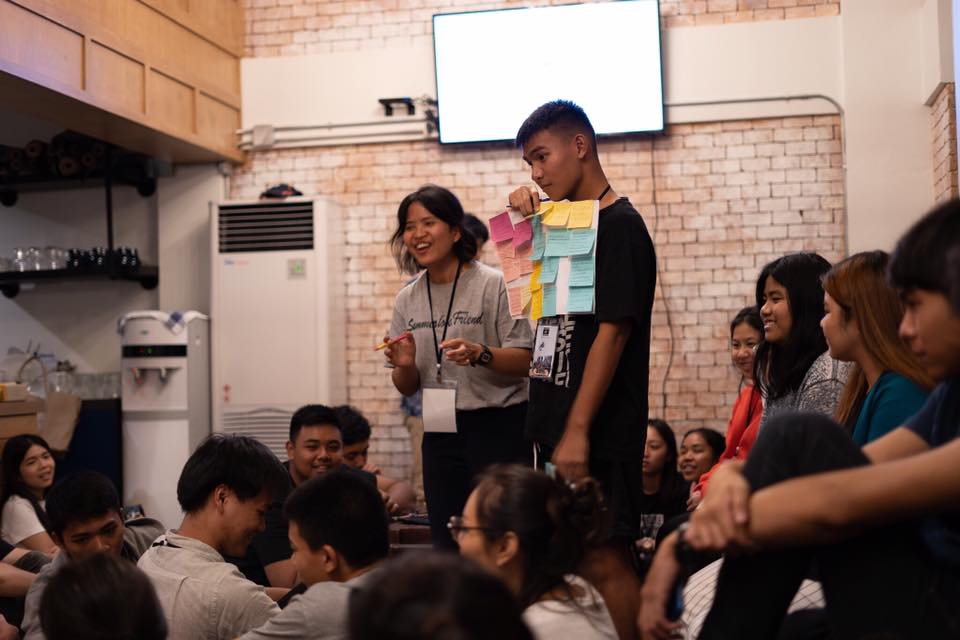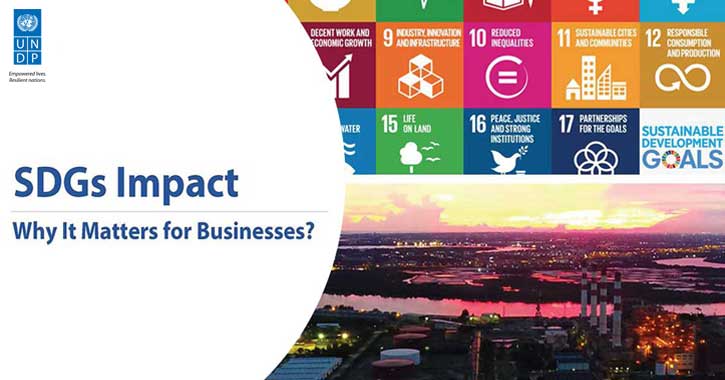- Published Date: 08/08/2019
- by: UNDP
Because “us” and “them” are the same

The conflict begins with a mere thought of “us” against “them”. The two simple pronouns draw a dividing line between people that can eventually breed conflict. While some countries clash and fight to have certain things their ways, others go about it harmoniously and empathetically by understanding the strength of diversity. How do they do it?
Even though there has been a fewer number of wars in the past 10 years, what remains and actually increases over time is the conflict among human relationship. Be it at a national level, in society, within an organization, or between people, this type of conflict has done more damage than imaginable.
Since 2016, many countries have found themselves amidst violent conflicts unseen in 30 years prior. The number of conflict-related fatalities has doubled, and this is the turning point for humanity, where it began to broaden its understanding of conflict, from getting to the root cause, studying its increasing rate, recurrences and ongoing state, to having a common goal of finding sustainable approaches to conflict prevention.

The dividing line of “us and them”
Many might think conflict arises when guns and violence are involved – when in fact conflict is much more easily provoked. Just think of the words “us” and “them”. These two simple pronouns carry depths beneath the surface that divide people and eventually breed conflict.
How “us and them” come into conflict
Race and skin colour – These two are strictly intertwined because human categorization of race is based on the distinct natural trait of skin colour. The June 1951 general conference between UNESCO and physical anthropologists in Paris concludes there are three main racial groups of all humans in the world: Caucasoid, Mongoloid and Negroid. However, should we agree with this conclusion?
Religion – 4,200 is the number of religious people around the world practice and put their faith in according to their will and background. One glaring example of a religious conflict is the Crusades War between Christian and Muslim population of Europe which happened in a total of 8 times to capture Jerusalem. The wars lasted nearly 200 years killing over seven million people and inflicting substantial loss and damage. Many violent conflicts today happen because religion is used as a “weapon” to divide people.
Language – On this earth that makes up of 195 countries recognized by the UN, there are approximately 6,500 languages and almost 2,000 more that are about to become extinct. The languages we use to speak and write daily are another factor that can separate people and fuel conflict. A common everyday occurrence would be people looking down on others because of the way they speak, whether from “unclear” articulation or differing accents.
There are also other factors like attitude, belief, gender and inequitable access to opportunities that can’t be measured in numbers. The UN estimates the world population is expected to rise from 7,600 million in 2019 to 9,800 million in 2050, which means there will be even much more diversity in the world.
So how do we live peacefully amidst diversity?

Understanding diversity: we’re different yet we’re the same
The topic of diversity has been much in public discourse in the past two years, including the #MeToo movement that created waves around the world after many actresses came forward with sexual abuse allegations against a big Hollywood producer; the fight to end discrimination and hate crimes against LGBTIQ people; and the Singapore model of pluralistic society, uniting diverse peoples and cultures of Chinese, Indians, Malaysians and many more to bridge the gap of conflict and deepen the understanding of diversity.
Understanding diversity begins with simple actions: listen, talk and cooperate.
Listen – Deep listening gives you a head start in understanding other people. Deep listening is a way of hearing in which we let of initial assumptions and the voice of judgement that clangs inside our head. We listen without reacting and interrupting, listen while suspending control and opinion.
Talk – Similar to listening, talking or inviting people around you to find a common way to be together in harmony is easier than you might think. This is because, as the status quo prevails, we don’t talk enough or don’t have enough diversity at the table. So, be as wide-reaching and find as much diversity as you can. Give importance to all nationalities, ages, genders as well as groups and organizations that may not believe in different things you do. This gives you an opportunity to see and explore different ideas and cultures.
Cooperate – Build cooperation and alliances between individuals, communities, organizations and even countries to find a common understanding of diversity and prevent conflict through knowledge-building activities, events or innovations, particularly ones that promote a society where everyone can take part in addressing various issues at a cooperative level.

Case study: Teeter-Totter Wall, or the pink seesaw on the US-Mexico border
A few months ago, a series of barriers were built along the US-Mexico border following President Trump’s executive order to prevent illegal immigration to the US. The order, publicized with falsehoods, including tens of thousands of illegal immigrants’ coming to “steal” American jobs, smuggling drugs, and operating human trafficking and gang crimes, paints a negative picture of Mexican immigrants as a threat to national security. Many conflicts and controversies followed the inception of Trump’s wall, especially those centring around racism in the US that has become more severe and increased the economic and social disparity.
But humans can’t be segregated by race or a wall. This is the idea that informs a group of artists and academics from various universities behind Teeter-Totter Wall, the installation of pink seesaws between the slatted barrier on the US-Mexico border. The simple act of playing a seesaw signifies and strengthens the connection between people on the two sides of the border. Not to mention it’s a fun, friendly and bias-free activity. On their intended meaning, the creators said, “The border wall has become a fuse in US-Mexico relations. We want both children and adults to connect in a meaningful way. Actions that take place on one side always have a direct consequence on the other side.”

Youth Co:Lab
In addition to what’s mentioned, young people play an important role in deepening our understanding of diversity, addressing dividing issues and managing conflicts. One way they can do this is through Youth Co:Lab, a UNDP initiative that enhances young people capacity through social innovation and entrepreneurship. The program returns under the theme “Embracing Diversity” to advocate people to “Respect Differences, Embrace Diversity.”
The program provides youth with an opportunity to attend workshops and develop their ideas into fruition. They will get to meet specialists and innovators from various sectors and pitch their project for funding support. Young people aged between 18-29 are invited to form a team of 3-4 and submit their project proposal. Youth Co:Lab 2019 will call for application in a few days.
Keep an eye on the program at www.youthcolabthailand.org and Thailand Social Innovation Platform Facebook
Sources:
– สหประชาชาติและธนาคารโลก 2018 “วิถีสู่สันติ: แนวทางครอบคลุมเพื่อป้องกันความขัดแย้งรุนแรง” บทสรุปผู้บริหาร ธนาคาร วอชิงตัน ดีซี. ใบอนุญาตครีเอทีฟคอมมอนส์ ซีซีโดย 3.0 ไอจีโอ
–https://www.worldometers.info/geography/how-many-countries-are-there-in-the-world/





